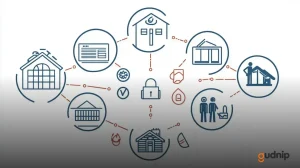Best Loans for Students with No Credit can be a lifesaver for those starting college without a credit history. Finding the right option helps cover tuition and living expenses without unnecessary stress.
Understanding the different loan types and eligibility requirements makes the process much easier. With the right guidance, students can access funds safely and start their academic journey with confidence.
From federal programs to private loans and helpful resources, there are plenty of ways to secure funding even with no credit. Keep reading to learn practical tips and strategies to find the loan that fits your needs best!
Understanding Student Loans Without Credit
Understanding student loans without credit can seem tricky at first. Many students worry they won’t qualify because they lack a credit history. However, there are options available specifically designed for students in this situation.
Loans for students without credit often focus on the individual’s potential rather than their past financial behavior. Lenders may consider factors like your income, school enrollment, and even a co-signer’s credit history. This makes it easier for you to access the funds you need for tuition and other expenses.
It’s important to research and compare different loan options. Some loans may have flexible repayment plans or lower interest rates that benefit students. By understanding what is available, you can make an informed decision and choose the best loan for your situation.
Types of Loans Available
There are several types of loans available for students without credit. One common option is a federal student loan. These loans often do not require a credit check and come with lower interest rates. They can help cover tuition and living expenses for students attending college.
Another option is private student loans. While some private lenders may require a cosigner, there are still special programs designed for students with no credit. These loans can provide additional funding and may offer variable interest rates that are competitive, depending on the lender.
Additionally, some schools offer their own loans. These institutional loans may have flexible repayment terms and low-interest rates designed specifically for students. It’s important to consider all the options available to find the best fit for your financial needs.
Eligibility Requirements for Students
To qualify for student loans, there are certain eligibility requirements that students must meet. First, you need to be enrolled at an eligible college or university. This means that your school must be recognized by the government or a qualified lender to ensure that you receive the funding.
Next, students usually need to be at least half-time enrolled in their classes. This means taking enough credits each semester to be considered a full-time or part-time student. Some loans may also have age requirements or limit eligibility based on the number of years you have been in school.
Lastly, for federal student loans, you must complete the Free Application for Federal Student Aid (FAFSA). This form helps determine your need for financial assistance and can open the door to various loan options that you can use even if you have no credit history.
Tips for Applying for Loans

Applying for loans can be overwhelming, but there are tips to make the process easier. First, gather all necessary documents before you start. This includes proof of income, school enrollment, and personal identification. Having everything ready will streamline your application and help you avoid delays.
Next, research different lenders and their offers. Compare interest rates, repayment terms, and eligibility requirements to find the best fit for you. Some lenders are more flexible for students with no credit, so look for options that specifically cater to your situation.
Lastly, consider having a trusted adult or family member as a co-signer. This can increase your chances of approval and may lead to better loan terms. Just make sure that both you and your co-signer understand the responsibilities before you commit.
Comparing Loan Offers
When comparing loan offers, it’s essential to look beyond the interest rate. While a lower rate may seem better, consider the total cost of the loan. This includes any fees that may apply, such as origination fees or application fees. Understanding the full cost will help you make a more informed choice.
Another important factor to compare is the repayment terms. Look at how long you will have to repay the loan and what your monthly payments will be. Some loans offer flexible repayment options, like deferment or income-based repayment plans, which can be helpful if you’re a student.
Lastly, check the lender’s customer service ratings and reviews. A lender with good support can make a big difference while you’re in school and during repayment. It’s worthwhile to read feedback from other students to learn about their experiences with different lenders.
Managing Debt as a Student
Managing debt as a student can feel overwhelming, but there are simple steps you can take to stay on track. First, create a budget that includes your monthly income and expenses. Knowing how much money you have coming in and going out will help you determine how much you can afford to pay toward your loans each month.
Make sure to keep in touch with your loan servicer. They can provide helpful information about your loans, payment options, and any potential deferment or forbearance options if you’re struggling. Regular communication can prevent any surprises and help you stay informed about your debt.
Lastly, consider making payments while you’re still in school, if you can. Even small payments can reduce the total amount of interest you’ll pay over time. Developing good habits now will help you manage your debt more easily once you graduate.
Resources for Students with No Credit
Many resources are available for students with no credit to help them secure loans and financial aid. Federal student aid websites offer valuable information about different loan programs. These resources guide you through the application process and explain eligibility criteria.
Your school’s financial aid office is another great place to seek help. They can provide personalized advice, suggest local scholarships, and connect you with programs that specifically help students without credit. Don’t hesitate to reach out to them with your questions.
Additionally, consider nonprofit organizations that assist students in navigating financial options. They often offer workshops, online courses, and one-on-one counseling. These resources can empower you to make informed decisions about your loans and manage your finances wisely.
Understanding your loan options is crucial when you’re a student with no credit. Different types of loans are designed to help students like you get the funding you need for education. Federal loans are often the best starting point, as they usually do not require a credit check and come with lower interest rates.
Exploring private loan options can also be beneficial. Some private lenders offer loans specifically aimed at students without credit histories. These loans may require a co-signer, which can make it easier for you to get approved and secure better terms.
It’s essential to assess your repayment options carefully. Look for loans offering flexible repayment plans, which can help you manage payments after graduation. Take time to compare all your choices so you can make the best financial decision for your future.





